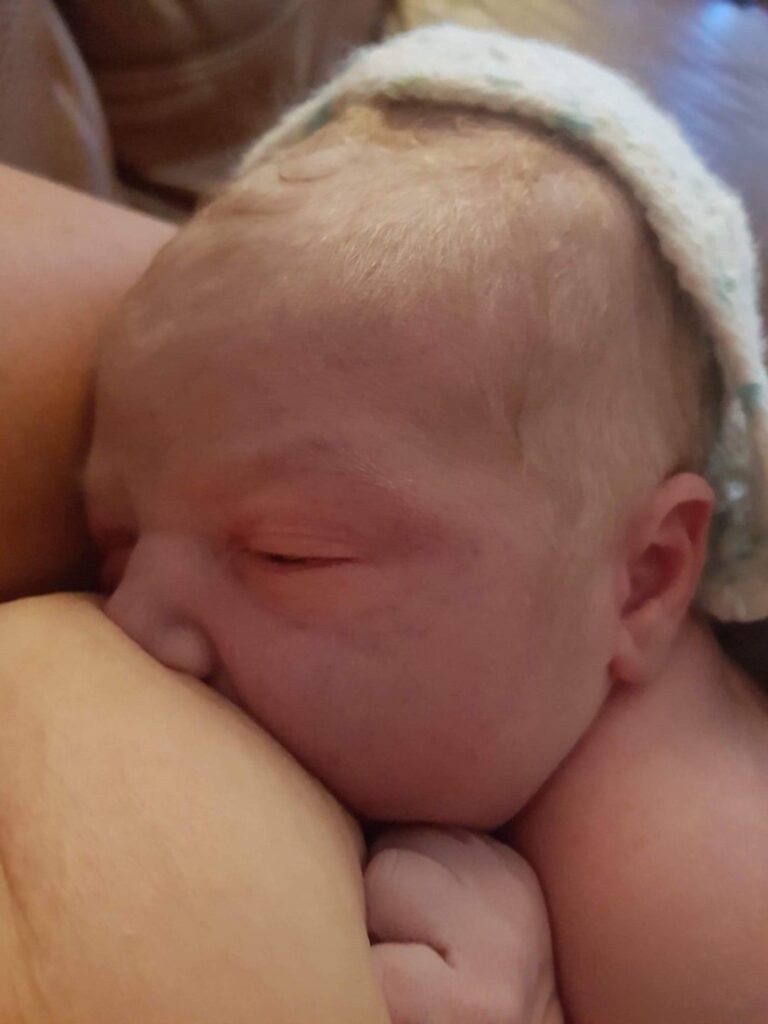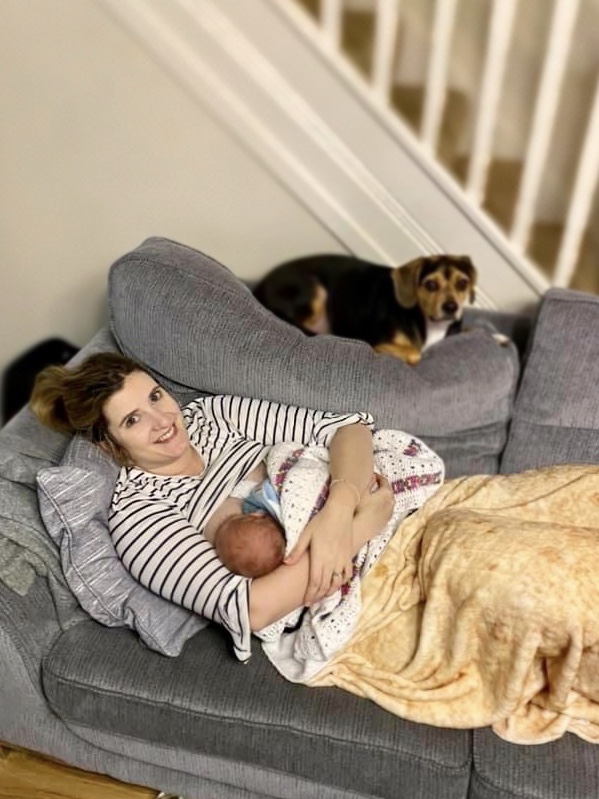Contents

Attaching your baby
Attachment refers to how your baby takes your breast into his/her mouth. Having your baby in a good position for feeding makes effective attachment easier. Points to remember are:
- Start with positioning
- Having your baby’s nose opposite your nipple will allow them to instinctively tilt their head back whilst opening their mouth really wide
- Whilst baby’s mouth is wide open, bring baby to your breast, hugging them in
- With a wide open gape, you’ll see their tongue comes down and forward
- It is their chin or lower lip that touches your breast first, pushing in and taking a big mouthful of your breast into their mouth.
During the feed:
- Baby’s cheeks are soft, round and not sucked in – this indicates there mouth is full of breast tissue. Do you remember the bulging milk ducts that are underneath the areola? This is why they need to take a deeply attached to the breast, rather than sucking on the end of the nipple
- Their nose usually gets a bit squished but they can still breath out of the side of their nostrils if not obstructed completely. This is another reason it is important to keep the baby’s head ‘free’ – you can support your baby around their neck, with your fingers in a c shape from ear to ear.
- More of the areola should be visible above the baby’s top lip than below
- Baby takes short sucks initially, followed by slow rhythmic sucks with pauses
- You might hear baby swallowing however if you hear smacking or clicking sounds, then ask for a breastfeeding observation.
And at the end of the feed:
- Baby will release the breast spontaneously
- Your nipple will be the same shape as when it went in, not wedged or squashed.
Below are some videos below showing effective attachment:

Positions for Breastfeeding
There are many positions for breastfeeding. What matters is that the position chosen enables you and your baby to breastfeed effectively. It’s worthwhile trying different positions so you can find your preference(s). Whatever position you choose you need to make sure you’re feeling relaxed and comfortable.
The La Leche League GB webpage has pictures of mothers feeding in lots of different positions.
Before you start make sure:
- Your baby’s body and head will be straight line from their ear, shoulder and hips
- Hold baby close to your body
- Hold the baby around the back of their neck so their head is free to tilt back
- Before they open their mouth and tilt their head back, you nipple will be pointing up their nose”
There are some really useful videos available online which can help you to see breastfeeding positions in action
